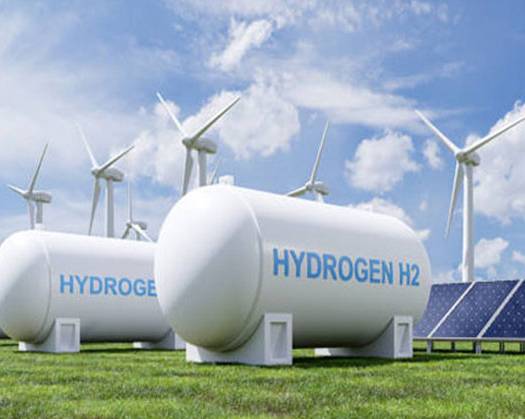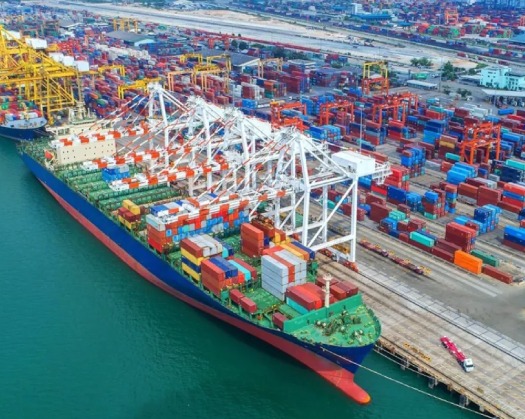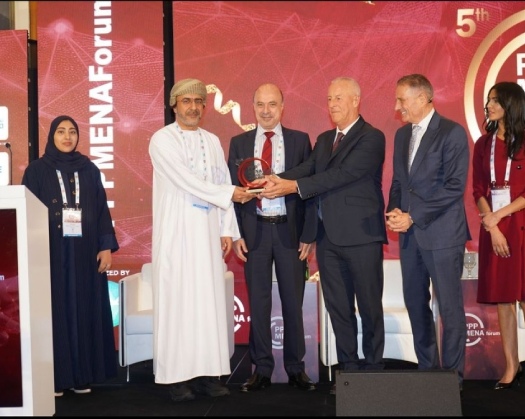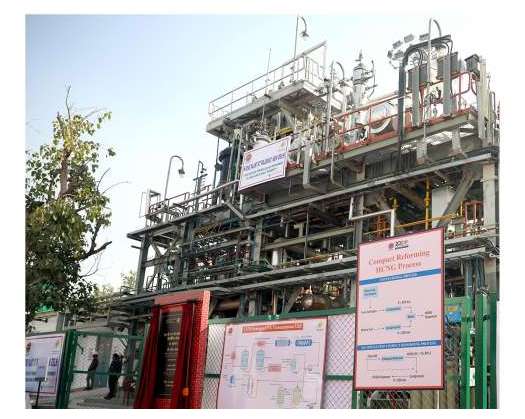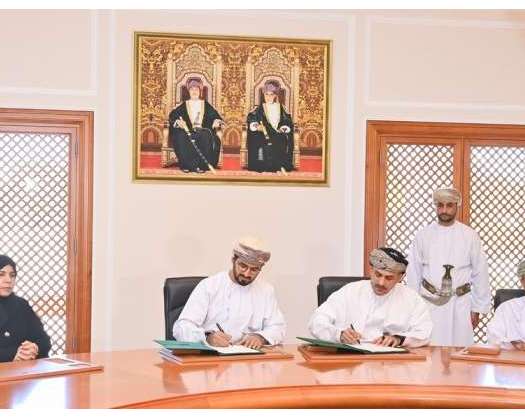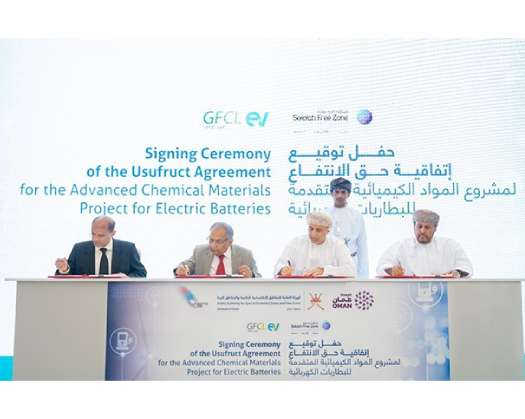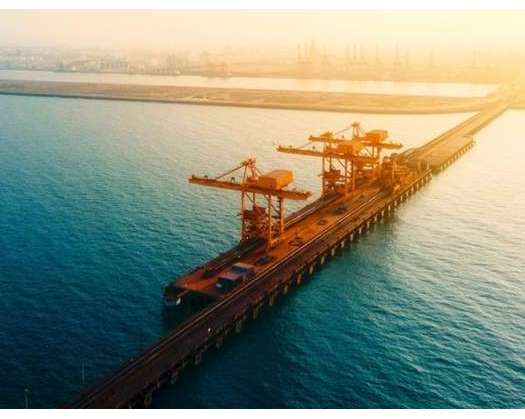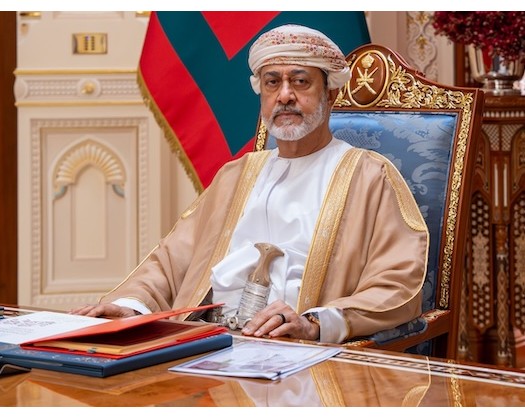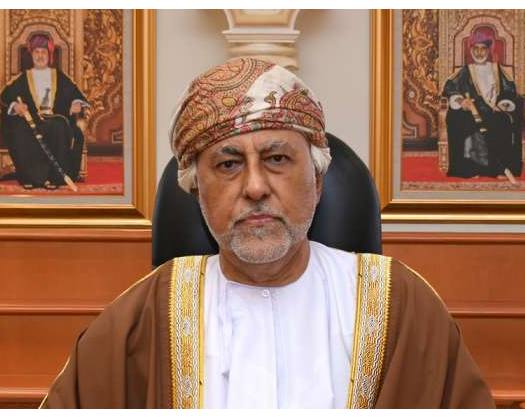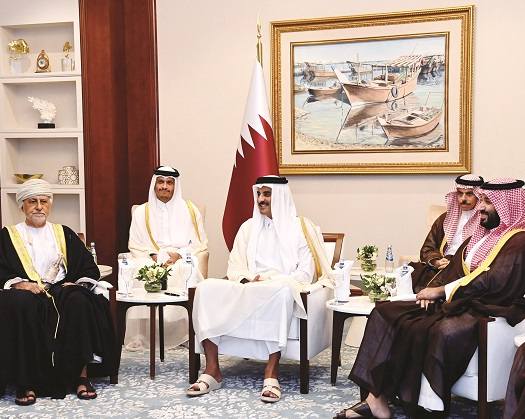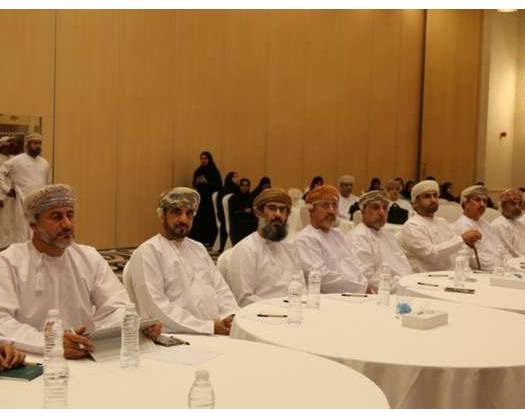New Delhi: India is on a mission to significantly increase its renewable energy capacity at an unprecedented rate, positioning the nation as a frontrunner in the global shift towards sustainable energy.
For example, the Indian Railways is set to conduct its inaugural trial of a hydrogen-powered train by December. Produced by the Integral Coach Factory in Tamil Nadu and designed to operate at speeds up to 140 kilometers per hour, this train utilizes fuel cells that combine hydrogen and oxygen to generate electricity, with water vapor being the sole emission. The trial will take place on the Jind-Sonipat route in Haryana, spanning a distance of 90 kilometers. Should the trial be successful, India intends to introduce 35 more hydrogen-powered trains to its railway network by 2025. This initiative is in line with the Indian government's objective of achieving net-zero carbon emissions by 2030.
In a recent development, the world's first energy transition company, Jakson Green, has successfully synthesized methanol from carbon dioxide captured from flue gases through a synthesis process as part of a pilot project at India's leading power generation company, the National Thermal Power Corporation’s (NTPC) Vindhyachal Thermal Power Plant.
NTPC Green Energy, currently boasting an installed capacity of 3,220 MW, aims to increase this to 6,000 MW by March 2025, 11,000 MW by March 2026, and 19,000 MW by March 2027.
India's inaugural multi-purpose green hydrogen pilot project at the Nathpa Jhakri Hydro Power Station (NJHPS) in Himachal Pradesh was inaugurated earlier this year. This project marks the nation's first multi-purpose (combined heat and power) green hydrogen generation facility, equipped to meet the high-velocity oxygen fuel (HVOF) coating facility's energy needs in addition to generating electricity through its 25kW capacity fuel cell.
Situated on the Bay of Bengal in the state of Odisha, India's Paradip Port is set to develop a specialized green hydrogen and green ammonia berth, capable of handling 5 million tonnes per annum (MPTA) of cargo, as part of the port's strategy to achieve full mechanization by 2030.
These renewable energy solutions are being implemented across various sectors in India. In October, the state-owned power generator NTPC announced a collaboration with the Indian Army to establish a Solar Hydrogen-based Microgrid at Chushul, Ladakh, with the goal of providing a stable power supply through Green Hydrogen in off-grid Army locations.
In line with the National Green Hydrogen Mission of the Government of India, these projects are set to accelerate the development of green hydrogen production infrastructure within India's power sector. Union Minister Nitin Gadkari has emphasized hydrogen as the future fuel, advocating for the promotion of green fuels in India. He envisions a future where ethanol-based vehicles will dominate the market, leading to job creation in the agricultural sector.
Hydrogen, especially green hydrogen, is currently being recognized as a pivotal alternative energy source in the global energy transition. Its appeal is largely due to its proven capability to emit minimal to no greenhouse gases, making it an increasingly favored option. In the context of energy demands, India's economy stands as the third largest in the world, and projections indicate that by 2030, the nation's energy consumption is expected to surge by 35 percent.
The Indian government's National Green Hydrogen Mission, initiated in January 2023, allocates a total budget of Rs 19,744 crores with the objective of establishing a green hydrogen production capacity of at least 5 million tonnes annually, accompanied by the addition of approximately 125 GW of renewable energy capacity across the country. Presently, non-fossil fuel-based energy sources account for about 42 percent of India's total installed energy generation capacity. The government's ambition is to elevate the proportion of non-fossil fuel-based energy in India's electricity generation capacity to 50 percent by the year 2030.
A significant portion of the budget, nearly Rs 40 million, has been dedicated to research and development activities for the fiscal year 2025–26. Additionally, US$2.1 billion has been allocated to the Strategic Interventions for Green Hydrogen Transition (SIGHT) scheme, which offers incentives for the production of green hydrogen. As part of the Green Hydrogen Mission, the government is also focused on cultivating a skilled workforce of approximately 600,000 individuals over the next six years.
The technology for hydrogen production is being developed domestically, boasting a high content of local materials. Recently, Bharat Heavy Electricals Limited (BHEL) has signed a Technology Transfer Agreement (TTA) with the Bhabha Atomic Research Centre (BARC) for the development of a 50 kW alkaline electrolyzer system, a critical step towards the scaling up and commercialization of indigenous alkaline electrolyzer technology for various sectors including refineries, fertilizer production, steel manufacturing, and transportation. Reliance Industries has also entered into a technology licensing agreement with Oslo-based Nel Hydrogen Electrolyser AS for the production of electrolyzers.
The primary objective of this mission is to establish India as a premier global center for the production, utilization, and export of green hydrogen and its derivatives. Concurrently, initiatives for green energy alliances at the state level are being initiated. The National Thermal Power Corporation (NTPC), a leading power conglomerate, has entered into a collaboration with Mahatma Phule Renewable Energy and Infrastructure Technology (MAHAPREIT) for the development of renewable energy parks and projects in Maharashtra. This agreement outlines a joint endeavor for the creation of grid-connected renewable energy parks and projects, which will include solar, wind, hybrid, and/or related solutions, with a potential capacity of up to 10 GW in Maharashtra.
In alignment with the objectives aimed at increasing the production of green hydrogen, the government has recently granted exemptions to solar and wind energy plants situated within special economic zones (SEZs) or export-oriented units engaged in the production of green hydrogen and its derivatives, allowing them to purchase modules and turbines from a pre-approved list of manufacturers. A notification issued on May 28, 2024, by the Ministry of New and Renewable Energy, clarifies that this exemption will be applicable to renewable energy plants scheduled for commissioning by December 2030, with the capacity to produce green hydrogen and its derivatives.
In accordance with the existing foreign direct investment (FDI) policy of the Government of India, the renewable energy sector permits up to 100 percent foreign direct investment under the automatic route. The Boston Consulting Group (BCG) in its report, "The Next ‘Digital’: Unlocking a $50 Billion Green Tech Opportunity," (2022), projects that the green technology sector in India will reach a market size of US$45-55 billion by 2027. The report emphasizes that the growth of the green technology sector is driven by the increasing adoption of sustainable applications across various sectors such as Internet of Things (IoT), cloud computing, data platforms & analytics, digital twin, and blockchain.
This month (November 12, 2024), ambassadors from the European Union, Germany, Denmark, and Belgium visited the renewable energy park in Khavda, Gujarat, where the Adani Group has constructed the world's largest renewable energy park, boasting a planned capacity of 30 GW. During their visit, Adani presented its ambitious plans to enhance green hydrogen production, with the aim of fulfilling the European Union's Renewable Fuels of Non-Biological Origin (RFNBO) requirements.
In addition to directly promoting investments in hydrogen technology, the Indian government is actively addressing several critical challenges, including the high costs associated with it, uncertainties in policies and technology, complexities within the value chain and infrastructure needs, regulatory and standard requirements, and public acceptance of emission-free fuel sources. The nation's goal to produce 5 million metric tons (mt) of renewable hydrogen by 2030, coupled with the aspiration to secure a 10 percent share of the global trade by that year, highlights its dedication to renewable energy. To explore innovative funding mechanisms that support the growth of renewable energy within models driven by the private sector, the government's think tank, NITI Aayog, in collaboration with India's Ministry of Power and Ministry of New and Renewable Energy, has introduced the ASSET (Accelerating Sustainable Solutions for Energy Transition) platform. This initiative aims to assist states in expediting their transition towards a greener future. It acknowledges the pivotal role of states in realizing India's national objectives of achieving net-zero greenhouse gas emissions by 2070.

